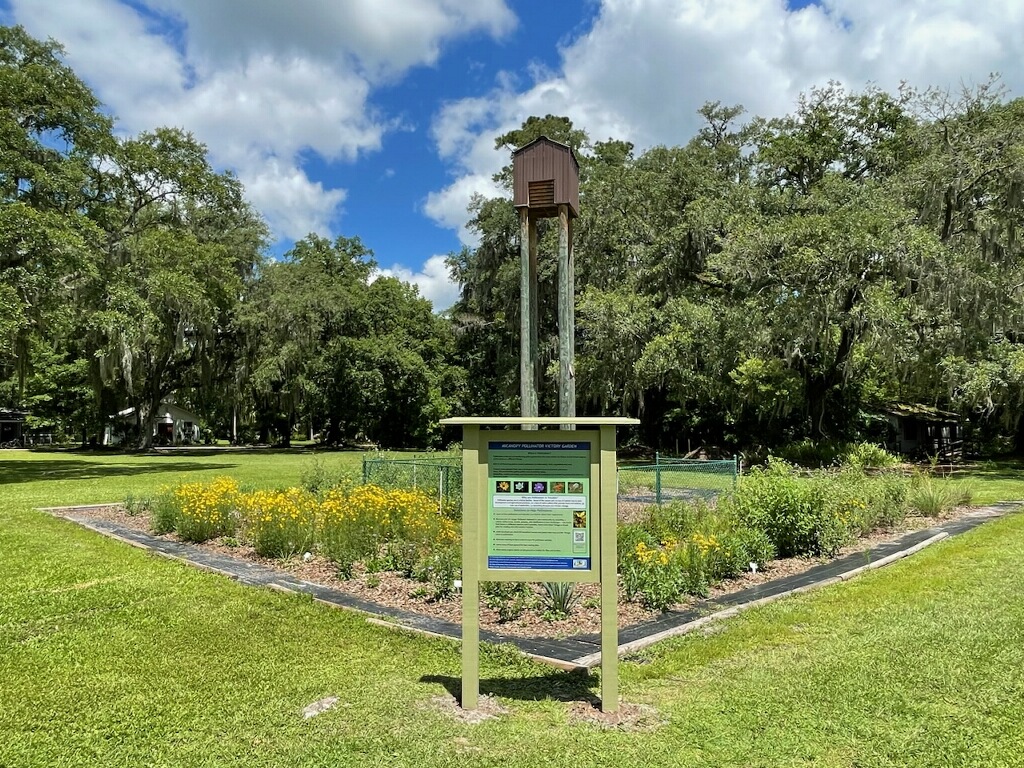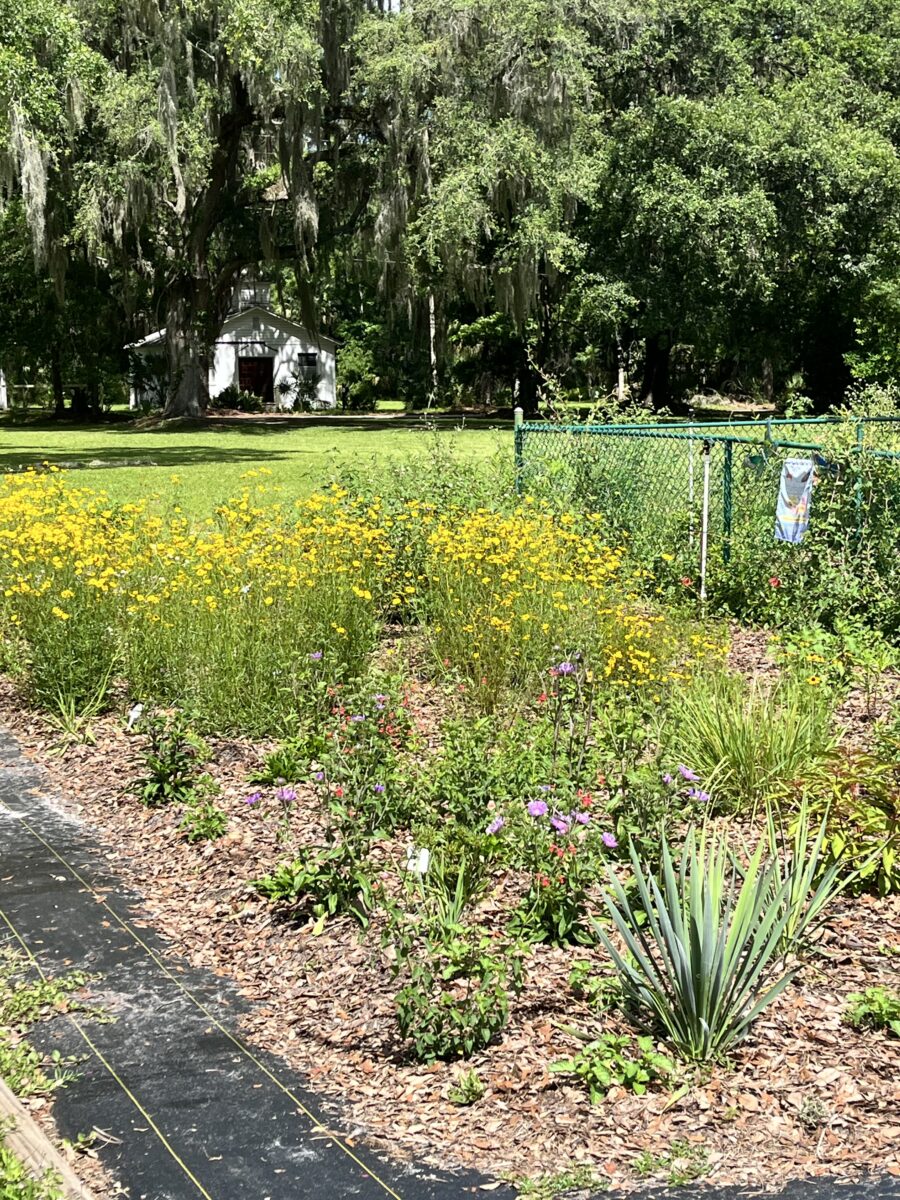A Year in Bloom: Highlights from the Micanopy Viva Florida Garden
by Claudia Larsen, Fall 2024

A year has passed since the installation of the Micanopy Pollinator Garden, and it has already become a thriving home for hundreds of pollinators and a source of inspiration for local gardeners. The 54 ‘x54’ garden surrounds the town’s Bat House and is conveniently located next to the post office, a regular stop for our community. This project was funded by a Florida Wildflower Foundation Viva Florida grant, and sponsored by the Old Florida Heritage Highway group, which is dedicated to preserving our area’s natural, historical and cultural heritage. We also received support from the Town of Micanopy staff and many local gardeners who help with weeding each month.
In October 2023, we planted 100 native trees, shrubs and grasses, along with over 400 wildflowers, creating a diverse pollinator habitat. The garden was an instant success, showcasing fall blooms from Lanceleaf tickseed (Coreopsis lanceolata), Leavenworth’s tickseed (C. leavenworthii), Tropical sage (Salvia coccinea) and Stoke’s aster (Stokesia laevis).

We saw a strong survival rate through the mild winter, requiring only minimal hand-watering for plant establishment. January brought a profusion of white blossoms on the Walter’s viburnum (Viburnum obovatum), followed in February and March by a pink and yellow display of Smooth beardtongue (Penstemon laevigatus), Black-eyed Susan (Rudbeckia hirta) and tickseed. As spring transitioned into summer, more species joined the show – Rattlesnakemaster (Eryngium yuccifolium), Blue porterweed (Stachytarpheta jamaicensis), Cutleaf coneflower (Rudbeckia laciniata), Tropical sage, and the star of the show – Snow squarestem (Melanthera nivea)! Planting 6–15 of each species in clusters created vibrant splashes of color that attracted bees and butterflies, while the Firebush (Hamelia patens) and Coral honeysuckle (Lonicera sempervirens) drew in hummingbirds.
This fall, the garden’s colorful palette features Swamp milkweed (Asclepias incarnata), Giant ironweed (Vernonia gigantea), Chapman’s goldenrod (Solidago odora var. chapmanii), Blue mistflower (Conoclinium coelestinum), Spotted beebalm (Monarda punctata), Elliott’s lovegrass (Eragrostis elliottii) and Narrowleaf yellowtops (Flaveria linearis). The garden provides year-round blooms thanks to:
- Careful soil preparation, including turf removal and solarization with clear plastic for 10 weeks
- A well-thought-out design using over 35 species
- Mass grouping of each species to create visual impact
- Monthly weeding by a team of 4–5 volunteers
- A Facebook page that keeps the community engaged with updates and photos
- Adequate rainfall
Only 3–4 species did not thrive, so this fall we’ll introduce a few new species to enhance diversity. In 2025, we plan to offer educational tours for garden and school groups and will participate in the University of Florida Spring Pollinator Count.
Thank you, Florida Wildflower Foundation, for giving us this wonderful opportunity to kickstart the creation of pollinator corridors throughout Micanopy!
